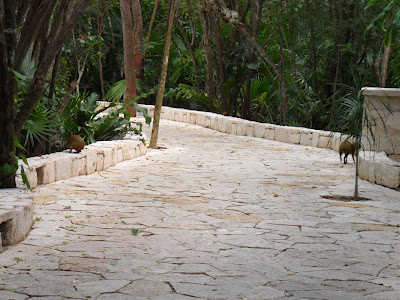We took a snorkel trip to the Caribbean Sea while we were in Mexico. We saw
lots of fish and even two stingrays. We also swam in two freshwater cenotes.
A cenote is a deep natural sinkhole resulting from the collapse of limestone bedrock
that exposes groundwater underneath. Cenote water is often very clear, as the water
comes from rain water
infiltrating slowly through the ground, and therefore contains
The first cenote we swam in was an open one that was just like
a big pond. It had little fish in it that liked to nibble on our toes.
We also jumped from a high dive and I was amazed that I did it. I even went first! I did it
a second time, but bruised my tailbone, so I should have stuck with the one jump!
Next, we tried the zip line. It was pretty fun!
Our second cenote was a covered one in a cave. This is the view looking out.
There were some underwater lights to help us see, but it was
dark and eerie at first. The water was perfectly clear and it was a
little bit cold, but it had some stalactites and a few bats
on the ceiling. It was very deep in some places,
but it was all very cool.




































